Signed l. Fontana. Executed in 1961. Canvas 57 x 47 cm. A certificate of authenticity executed by Fondazione Lucio Fontana Milan is included with the lot.
Scacchi Gracco, Milano Private collection, Stockholm.
Up until the 1940s Fontana lived and worked in Italy and France, but at the start of the Second World War he travelled to Argentina. It was in Buenos Aires at the Academia de Altamira that his ideas of ‘Spazialismo’ were born, the artistic movement that Fontana founded and which came to shape his entire artistic career. In his manifesto from 1946, Manifesto Blanco, he encouraged artists and like-minded to abandon traditional and academic notions of art to embrace new technologies and science in order to create a fourth dimension. A significant aspect to what made him so compelling was his ability to merge sculpture and painting. His choice of forms remained inconsistent throughout his career – from geometrical perfection to shapes that were more difficult to define. It wasn’t about the cuts or the holes in themselves, but about the process of getting there. Fontana’s work was a product of its time, independently of his choice of medium or technique. Fontana had already begun to work with the concept ‘Concetto Spaziale’ in 1947. A few years later he created the series Pietre (‘stones’) where he fused painting and sculpture by applying thick layers of paint on the canvas and then adding a collage of coloured pieces of glass. Shortly thereafter followed a series of works he called Buchi (‘holes’). Here the canvas was punctured and perforated with holes in order to break up its two-dimensional quality and expose the space behind the painting. It was towards the end of the 1950s that he began making the Tagli pieces, that, together with the Buchi, became the forms he continued to work with until his death in 1968. Through his ‘Concetto Spaziale’ Fontana succeeded in erasing the border between painting and sculpture. Fontana’s artistic journey with Tagli and Buchi coincided with the Space Race of the 1960s. The ultimate destination for man’s travel into cosmos was the Moon, and in 1961 Yuri Gagarin became the first man in space. “As a painter, while working on one of my perforated canvases, I do not want to make a painting; I want to open up space, create a new dimension for art, tie in at the cosmos as it endlessly expands beyond the confining plane of the picture. With my innovation of the hole pierced through the canvas in repetitive formations, I have not attempted to decorate a surface, but, on the contrary, I have tried to break its dimensional limitations. Beyond the perforations a newly gained freedom of interpretation awaits us, but also, and just as inevitably, the end of art”. (Lucio Fontana 1966)
Signed l. Fontana. Executed in 1961. Canvas 57 x 47 cm. A certificate of authenticity executed by Fondazione Lucio Fontana Milan is included with the lot.
Scacchi Gracco, Milano Private collection, Stockholm.
Up until the 1940s Fontana lived and worked in Italy and France, but at the start of the Second World War he travelled to Argentina. It was in Buenos Aires at the Academia de Altamira that his ideas of ‘Spazialismo’ were born, the artistic movement that Fontana founded and which came to shape his entire artistic career. In his manifesto from 1946, Manifesto Blanco, he encouraged artists and like-minded to abandon traditional and academic notions of art to embrace new technologies and science in order to create a fourth dimension. A significant aspect to what made him so compelling was his ability to merge sculpture and painting. His choice of forms remained inconsistent throughout his career – from geometrical perfection to shapes that were more difficult to define. It wasn’t about the cuts or the holes in themselves, but about the process of getting there. Fontana’s work was a product of its time, independently of his choice of medium or technique. Fontana had already begun to work with the concept ‘Concetto Spaziale’ in 1947. A few years later he created the series Pietre (‘stones’) where he fused painting and sculpture by applying thick layers of paint on the canvas and then adding a collage of coloured pieces of glass. Shortly thereafter followed a series of works he called Buchi (‘holes’). Here the canvas was punctured and perforated with holes in order to break up its two-dimensional quality and expose the space behind the painting. It was towards the end of the 1950s that he began making the Tagli pieces, that, together with the Buchi, became the forms he continued to work with until his death in 1968. Through his ‘Concetto Spaziale’ Fontana succeeded in erasing the border between painting and sculpture. Fontana’s artistic journey with Tagli and Buchi coincided with the Space Race of the 1960s. The ultimate destination for man’s travel into cosmos was the Moon, and in 1961 Yuri Gagarin became the first man in space. “As a painter, while working on one of my perforated canvases, I do not want to make a painting; I want to open up space, create a new dimension for art, tie in at the cosmos as it endlessly expands beyond the confining plane of the picture. With my innovation of the hole pierced through the canvas in repetitive formations, I have not attempted to decorate a surface, but, on the contrary, I have tried to break its dimensional limitations. Beyond the perforations a newly gained freedom of interpretation awaits us, but also, and just as inevitably, the end of art”. (Lucio Fontana 1966)
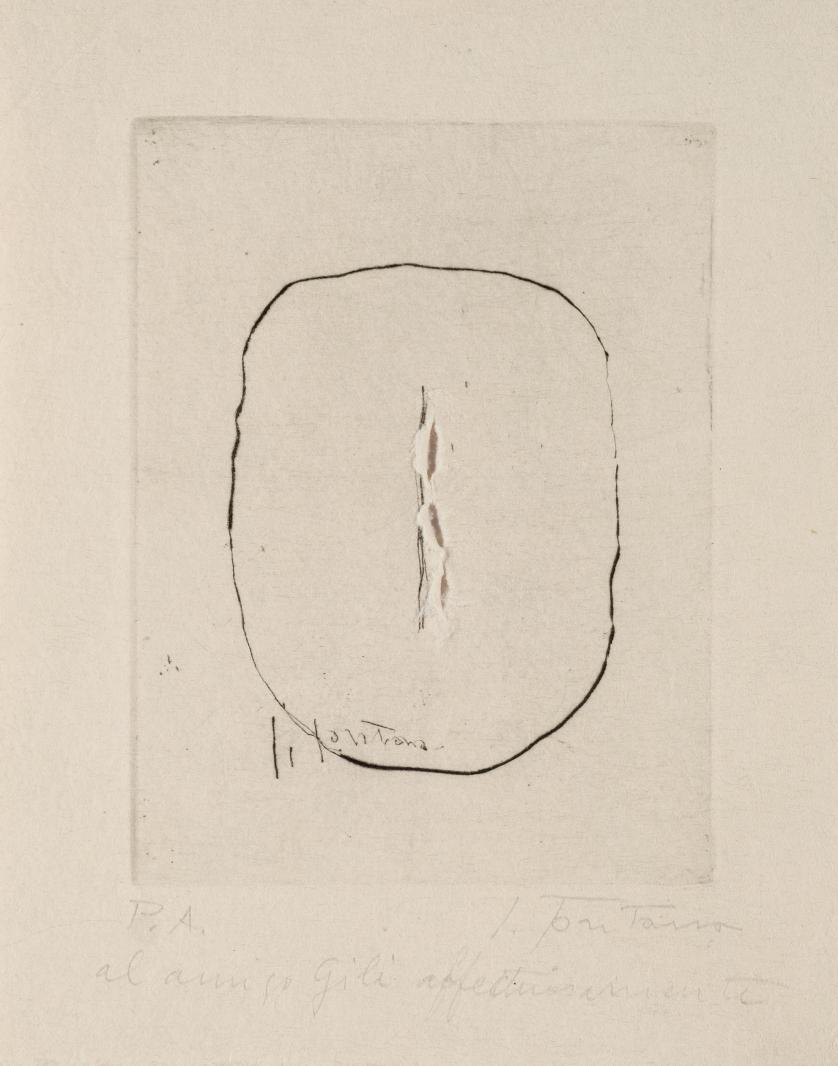







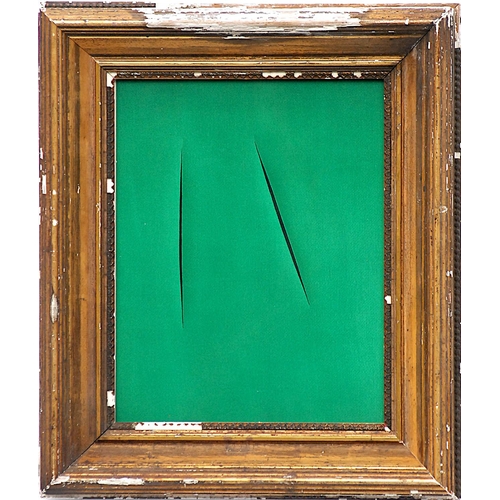
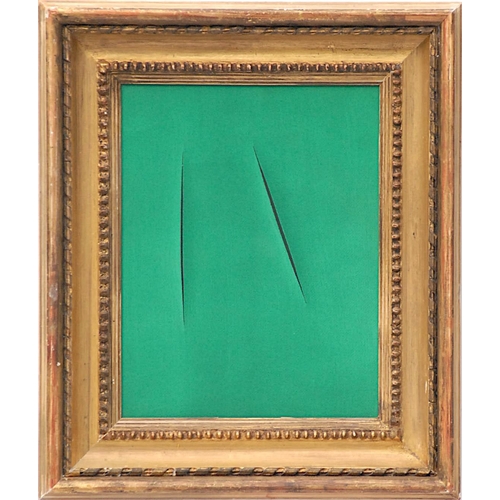
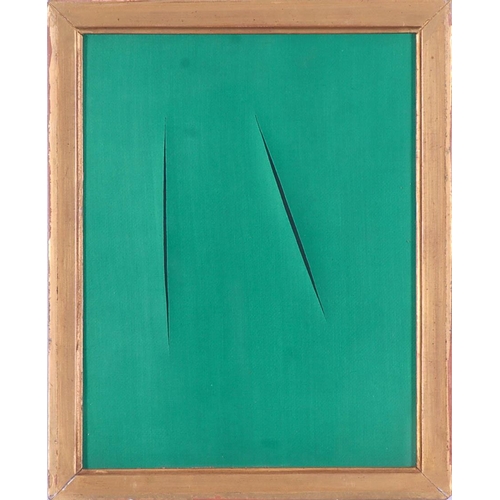

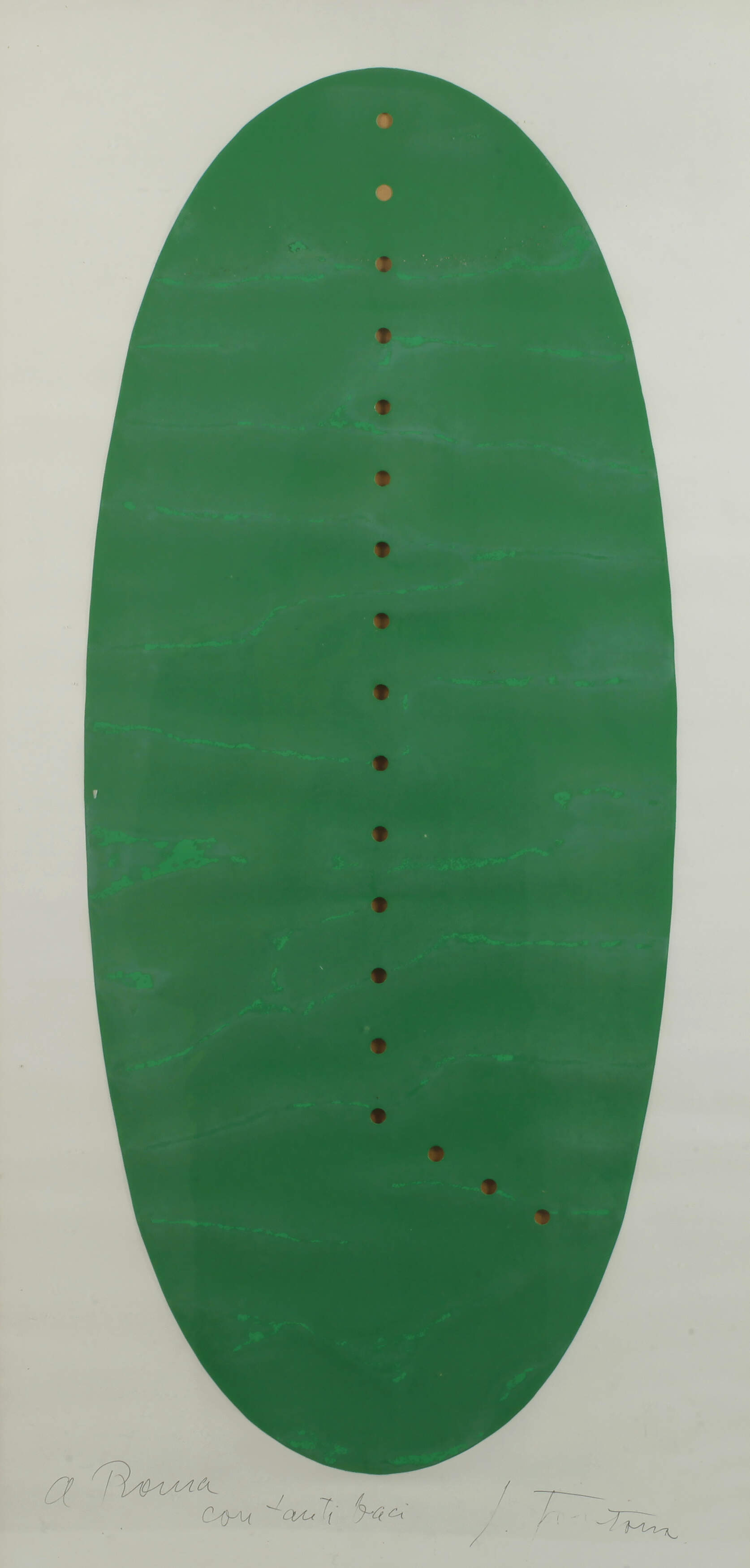
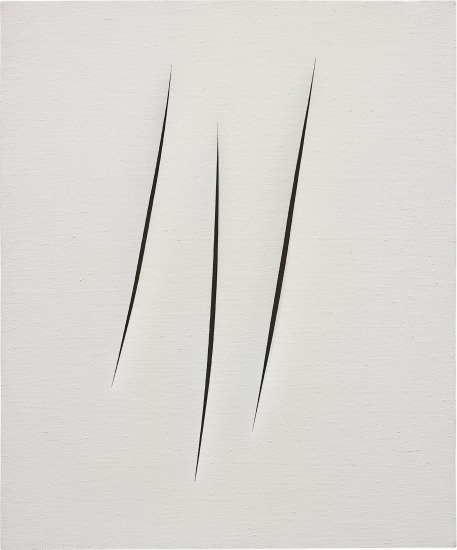
Testen Sie LotSearch und seine Premium-Features 7 Tage - ohne Kosten!
Lassen Sie sich automatisch über neue Objekte in kommenden Auktionen benachrichtigen.
Suchauftrag anlegen